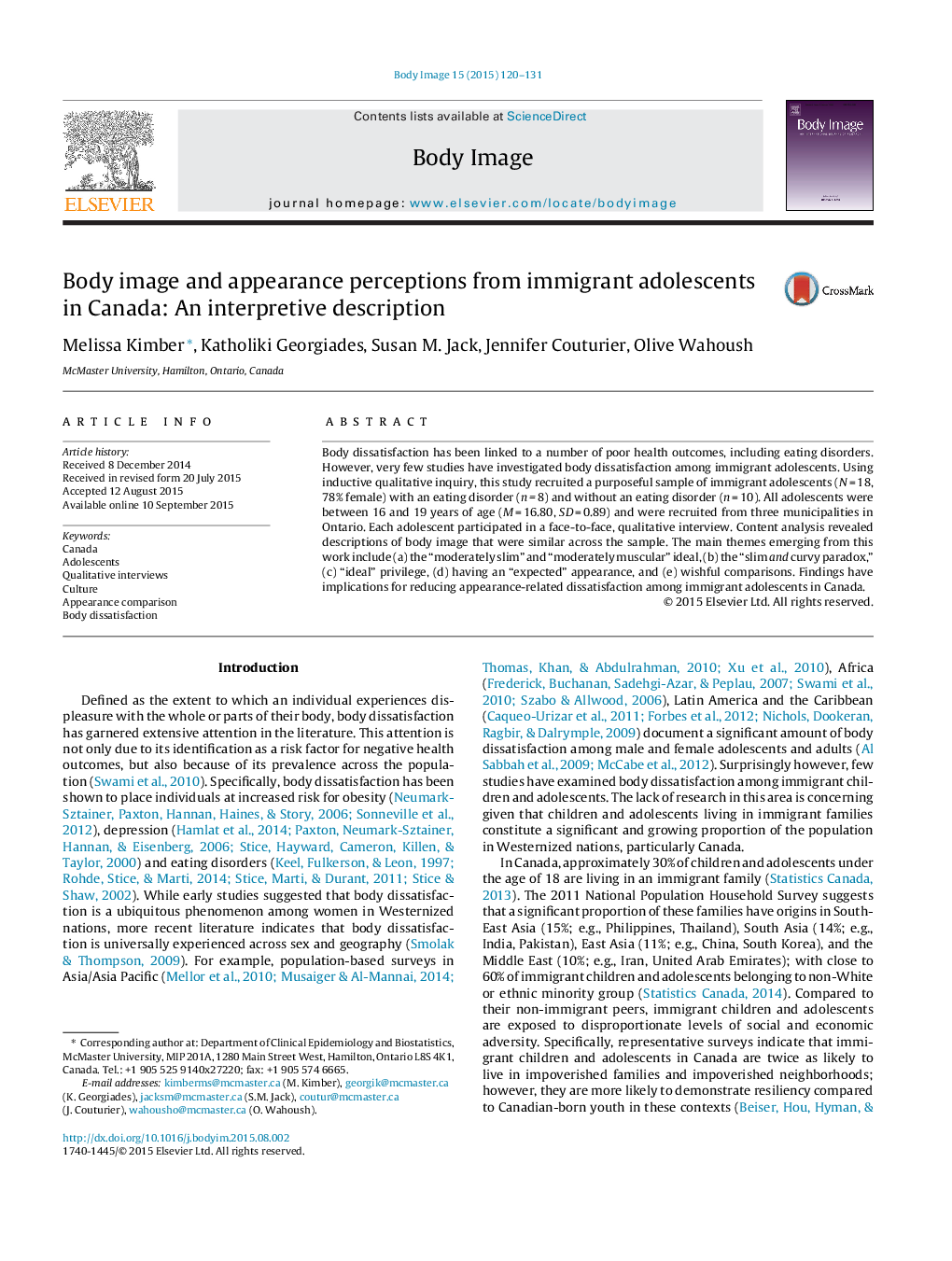| Article ID | Journal | Published Year | Pages | File Type |
|---|---|---|---|---|
| 902729 | Body Image | 2015 | 12 Pages |
•We qualitatively interview 1st and 2nd generation immigrant adolescents from Canada.•Our sample includes immigrant adolescents with and without eating disorders.•Immigrant adolescents engage in social comparison with peers, family members and those in popular media.•Immigrant adolescents equate social and class status with appearance.•Findings support body image ideals that extend beyond slimness and muscularity.
Body dissatisfaction has been linked to a number of poor health outcomes, including eating disorders. However, very few studies have investigated body dissatisfaction among immigrant adolescents. Using inductive qualitative inquiry, this study recruited a purposeful sample of immigrant adolescents (N = 18, 78% female) with an eating disorder (n = 8) and without an eating disorder (n = 10). All adolescents were between 16 and 19 years of age (M = 16.80, SD = 0.89) and were recruited from three municipalities in Ontario. Each adolescent participated in a face-to-face, qualitative interview. Content analysis revealed descriptions of body image that were similar across the sample. The main themes emerging from this work include (a) the “moderately slim” and “moderately muscular” ideal, (b) the “slim and curvy paradox,” (c) “ideal” privilege, (d) having an “expected” appearance, and (e) wishful comparisons. Findings have implications for reducing appearance-related dissatisfaction among immigrant adolescents in Canada.
